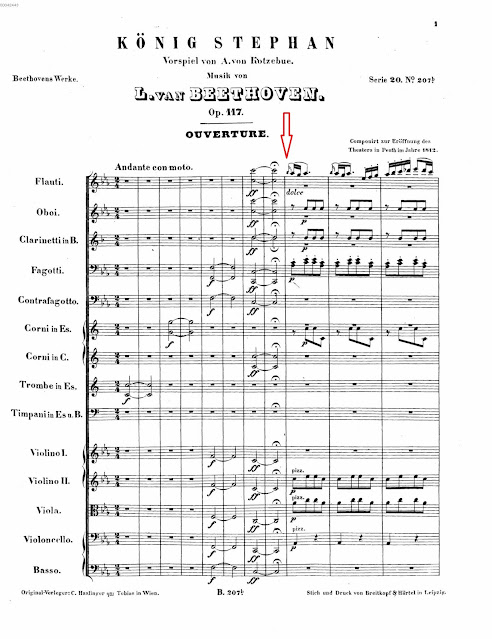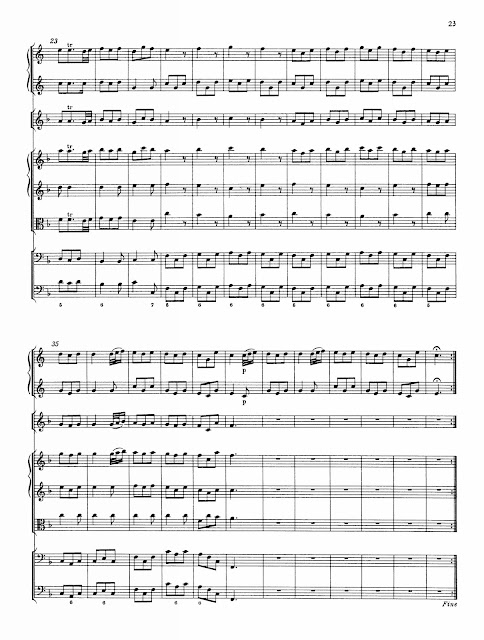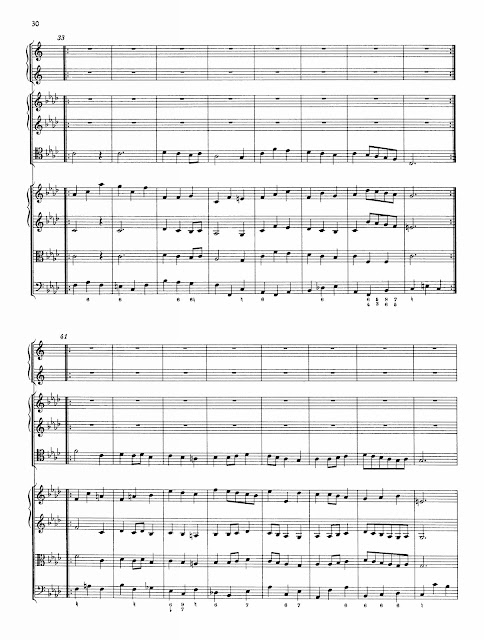DXVII. BEETHOVEN, Ludwig van (1770-1827)
Overture to King Stephen, Op. 117 (1811)
Vienna Philharmonic Orchestra
Claudio Abbado, cond.
(6:37)
We have only to glance at Thayer's list of compositions completed in 1811 to see what an unproductive year it was for Beethoven, who spent much of the year recovering from various ailments at Teplitz.
- Trio in B-Flat Major, Op. 97
- Music to the Ruinen von Athen, Epilogue by August von Kotzebue, Op. 113
- Music to König Stephan, Ungarns erster Wohlthäter, a Prologue by Kotzebue, Op. 117
- Song by Stoll, An die Geliebte, WoO 140. Two versions both dated December.
Kotzebue (1761-1819) was later assassinated by a politically-motivated theology student in Mannheim.
The King Stephen commission came from the Hungarian city of Pest for the opening of a new theatre. The movements following the overture depict the life of the founder of modern Hungary in the late 10th and early 11th centuries.
**
Beethoven carefully incorporated the Hungarian musical traditions, for example, the folk styles of lassú and friss (slow and fast). First a blast of four notes, then an andante starting on the subdominant:
![]()
It repeats, raised a whole tone:
with the final D being the bass of a first inversion dominant, B-Flat Seventh chord. Beethoven holds the dominant B-Flat ...
... adding an F-Sharp in the bassoon, creating an augmented B-Flat chord:
which leads into the tonic for the lively Presto:
These syncopations are a nice touch:
Let's compare this next section of King Stephen :
transitioning to G Major. However, he soon introduces a long B-Flat Seventh chord -- adding the F-Sharp (creating an augmented chord) again at the last minute which leads into the Presto in the tonic:
before returning first to the phrase that resembles the Ninth, and then to the original Presto theme -- and finally ending the overture in the triumphant tonic:































































